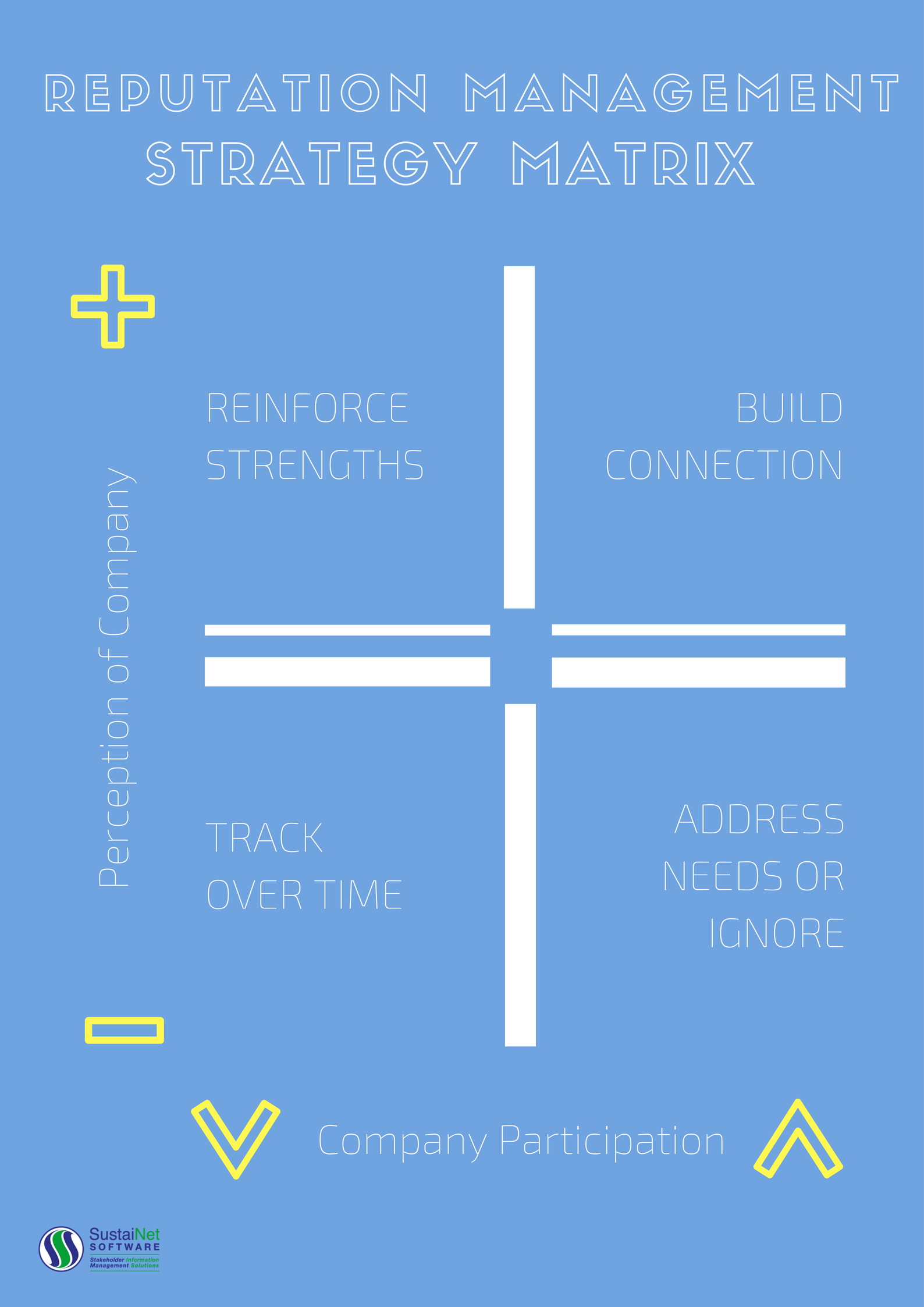
Reputation Management Strategy Matrix
Managing the reputation of your company isn’t a side project, it needs to be built-in to day to day business operations.
A company with a great reputation attracts the best people, and generates the most loyalty with customers and internal stakeholders. So in order to run an operation that attracts and nurtures your stakeholder relationships – including project partners, employees, or customers – here are four steps a business can take to maintain a positive reputation:
1/ Reinforce Strengths
Stakeholders should know and be reminded of what your company does well. For example, if a company has kept an open mind when engaging with stakeholders, has a grasp on corporate social responsibility, and has transparent branding, it is easy to share their story through online content, in advertising, or in reports that important stakeholders will see.
A good way to collect and communicate the proven results of a company’s strengths is to look through online reviews by real customers. Studies have shown that users will often search for others’ experiences with a company online before giving them their business. Real customer comments and testimonies will boost a company’s online presence, highlight their strengths, and ultimately drive their business.
2/ Build Relationships
Reaching out directly to stakeholders are an extremely important component of developing an organization’s image. Attentive and thorough consultation is much preferred over a salesy/PR approach to stakeholder engagement. It is fairly straightforward to leave a good impression and nurture a relationship face-to-face with co-workers and contractors. Simple things such as showing gratitude, providing support, and doing regular check-ins on a project are great ways to build professional relationships.
For larger-scale stakeholders engagement, getting to know target demographics and psychographics will be key in building customer relationships. In addition, an efficient and transparent customer service policy will keep those that one does directly interact with satisfied with what they receive from a business. They need to know that their needs are heard and prioritized in the eyes of a company.
3/ Track Over Time
Tracking your engagement with stakeholders will ensure that no milestones, important facts, or project updates are missed or overlooked. If interactions and activations are tracked and reported, it leaves little room for miscommunication between stakeholders. Monitoring also ensures that wins are acknowledged and celebrated, which is a great way to make sure stakeholders know their efforts are appreciated. Software such as StakeTracker make it easy to collect and report on the data.
4/ Address Needs or Ignore
In the digital age, news of business blunders can spread rapidly. Ignorance or inattention to what your stakeholders are saying about you can generate a bit hit to your reputation. Some feedback isn’t helpful or is spam – but it takes a keen understanding of reputation management to know if there is feedback received that doesn’t warrant a response.
One way for a company to address the needs of its stakeholders is to think win-win. This means that one addresses the needs of stakeholders, and examines how everyone can benefit in some way from each situation, issue, or project. This is an essential component of effective leadership.
How can SustaiNet help with reputation management?
StakeTracker stakeholder management software meets the needs of today’s stakeholder engagement and public consultation professionals by helping them efficiently manage interactions and communications with stakeholders, communities and the public.
Request a web demo here.

Leave a Reply